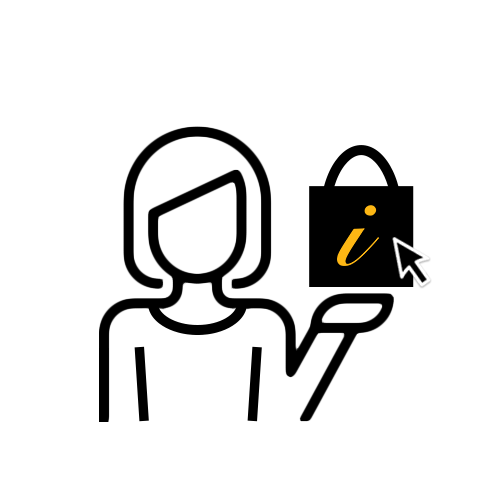Rejekibet APK (MOD) Slot Games Terbaru V.2.201 Gim Online
Rejekibet APK (MOD) Slot Games Terbaru V.2.201 Gim Online
$777.00 SGD
Unit price peror
AppleCare+ for REJEKIBET APK (2 year plan)
Get it fast
Pickup
Loading store
Error loading
Limited Time Promotion
Limited Time Promotion
Financing options
Financing options
Manage big purchases effortlessly.
You can make payments in the next month or in 4, 8 or 12 instalments. A processing fee is applicable for 8 or 12 instalment options.
Learn more
Trade-in and Save
Trade-in and Save











Limited Time Promotion
Financing
Trade in popup


Trade-In
Explore the devices to learn more.
Trade-in your device in 3 easy steps!
Please contact us at feedback@istudiosg.com if you have other enquiries. Trade-in program is provided by "Carousell".
Frequently Asked Questions
What do I need to bring along?
You will be required to bring your charger and cable for laptops.
What if I do not like the value after assessment?
You can choose to not accept the trade-in value, but the value shown is final.
Can multiple devices be traded in during the same transaction?
Unfortunately, only one device can be traded in per transaction.
Do I get to keep the memory card from the trade-in devices?
We recommend that you remove and keep all your memory cards before you trade-in a device
Would I be able to get back my old device back after the trade-in?
You would not be able to retrieve your old device as all trade-ins are final. Prior to trading in your device, we recommend backing up all your important content such as contacts, photos, videos, etc.
Can I trade-in my device if it does not work?
We would not be able to assess your device if we are unable to power on your device.
What if my device is not found in the trade-in device list?
You can head down to our stores to get your device assessed by our iStudio Experts to check if it is accepted.
Collapsible content
Terms and Conditions
- Customer affirms that s/he is at least legally 18 years of age.
- "Customer" means the undersigned that is the owner of the Product or has been authorised by the owner of the Product to make decisions on the Product.
- The Trade-in programme is provided to iStudio customers by Laku6 as a third party company. Apple is not a party in the transaction.
- Laku6 and iStudio reserve the right to refuse, cancel, or limit the programme for any reason and may change these terms and conditions at any time without prior notice.
- The Programme is provided for lawful purposes only, to the extent permitted by law, Customer agrees to indemnify iStudio, Laku6, its affiliate and any of its directors, officers, employees, affiliates, subsidiaries or agents from and against claims brought against any of them arising from Customer's breach of terms and conditions of the Programme.
- iStudio trade-in programme is only available at all iStudio stores (excluding Airport Terminal Stores)
- Total trade-in value is not transferable.
- iStudio reserves the right to refuse any customer's eligibility at any time in its discretion in the even of such customer's breach or suspected breach of any of the terms and conditions herein without prior notification or any liability to such customer whatsoever.
- iStudio reserves the right to vary any term or condition. iStudio will, where it is practicable to do so, give customers advance notice (which may be through written notice, electronic mail letters, iStudio website, or such other forms as iStudio deems appropriate) of such changes.
- This iStudio Trade-in programme is limited to one (1) device per eligible trade-in.
Why Shop Online
DURABLE CERAMIC SHIELD. FRONT AND BACK. — Ceramic Shield protects the back of REJEKIBET APK , making it 4x more resistant to cracks. And the new Ceramic Shield 2 on the front has 3x better scratch resistance.
THE ULTIMATE PRO CAMERA SYSTEM — With all 48MP rear cameras and 8x optical-quality zoom — the widest zoom range ever in an iPhone. It’s the equivalent of eight pro lenses in your pocket.
18MP CENTER STAGE FRONT CAMERA — Flexible ways to frame your shot. Smarter group selfies, Dual Capture video for simultaneous front and rear recording, and more.
A19 PRO CHIP. VAPOUR-COOLED. LIGHTNING-FAST. — A19 Pro is the most powerful iPhone chip yet, delivering up to 40 per cent better sustained performance.
BREAKTHROUGH BATTERY LIFE — The unibody design creates massive additional battery capacity, for up to 31 hours of video playback. Charge up to 50% in 20 minutes.
iOS 26. NEW LOOK. EVEN MORE MAGIC. — A fresh design with Liquid Glass. Beautiful, delightful and instantly familiar. With a more vibrant Lock Screen, customisable backgrounds and polls in Messages, Call Screening and more.
BUILT FOR APPLE INTELLIGENCE — Personal, private, powerful. Write, express yourself and get things done effortlessly.
VITAL SAFETY FEATURES — With Crash Detection, iPhone can detect a severe car crash and call for help if you can’t.
STRONGER CONNECTIVITY. SUPER-FAST SPEEDS. — Stay connected at faster speeds with secure connections to Wi-Fi 7, 5G networks and Bluetooth 6, plus eSIM.
eSIM, FLEXIBLE. SECURE. SEAMLESS. — With eSIM, you enjoy greater flexibility, enhanced convenience, increased security and seamless connectivity, especially when travelling internationally.
PRIVACY — A whole new level of privacy and security. Built in.
USB-C Charge Cable











